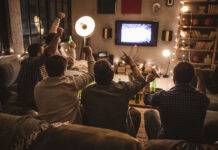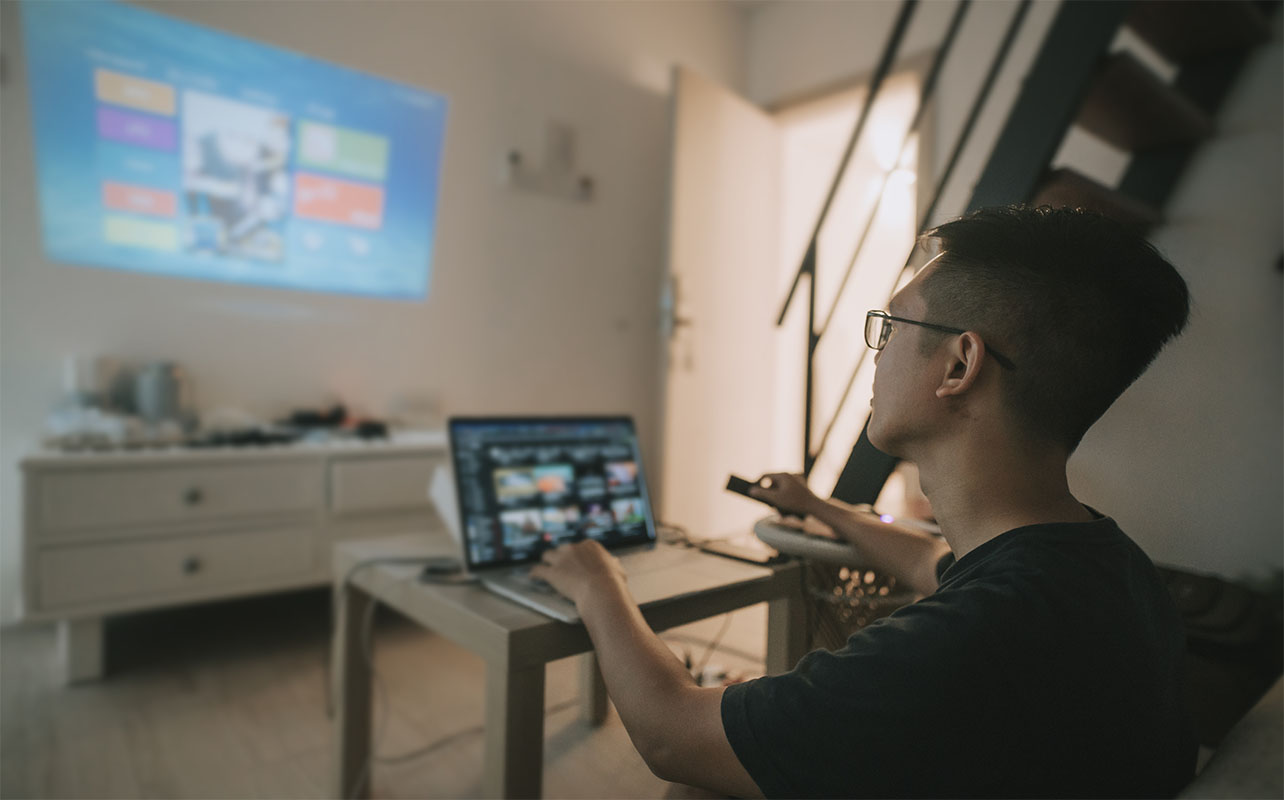
Projecting onto a wall can be a quick, affordable way to watch movies or access content from a laptop. You don’t have any additional gear to buy along with a projector, no installation, and you can be up and running in minutes. But if you’ve invested in a quality projector, skipping the projector screen is a bit like pairing a high-end sound system with tinny laptop speakers: you’re not seeing what the projector can truly do.
This projector guide will walk you through what affects picture quality, when a wall might work, when a screen is worth it, and other options that can help you create a cinematic home theatre.
Does a projector need a screen or can you use a wall?
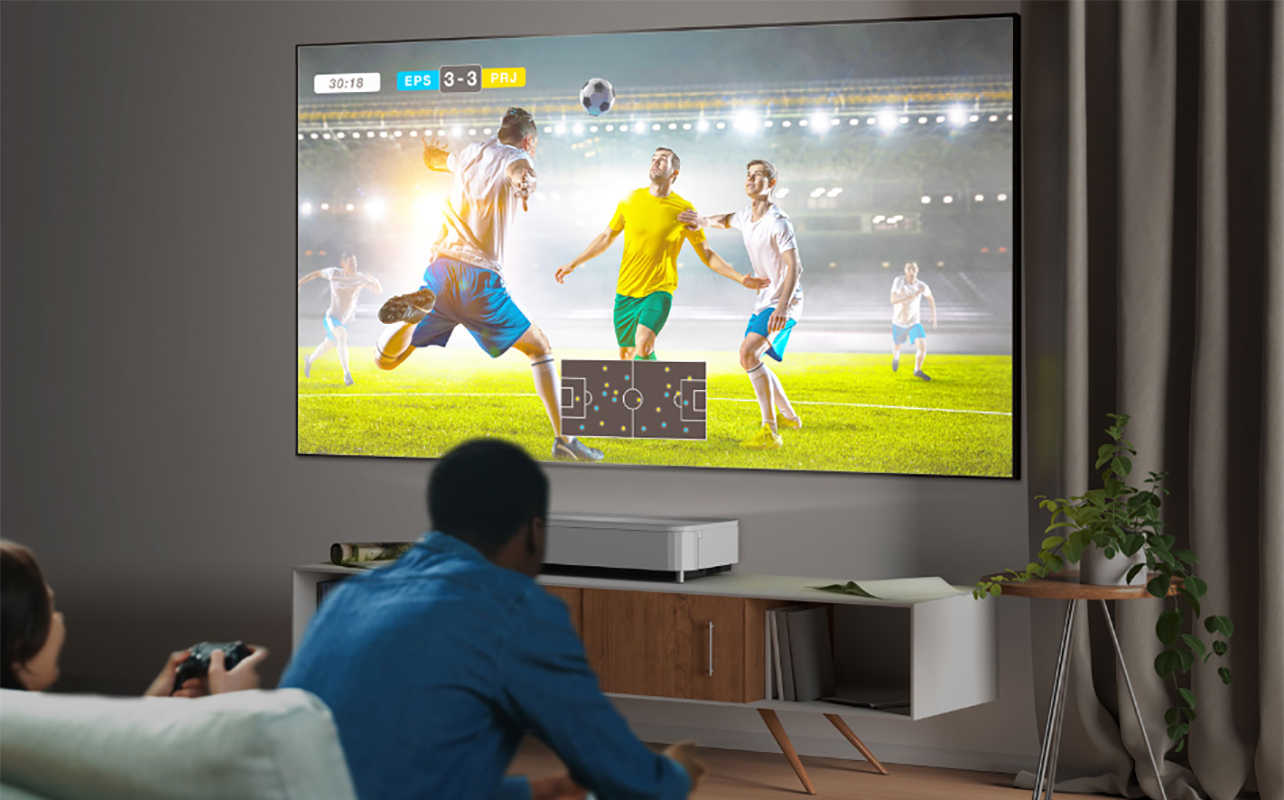
You don’t necessarily need a screen for a projector to work. It’s certainly possible to project directly onto a wall, and many people do this when they’re starting out or when the setup is temporary. In dorm rooms or small apartments, it’s a simple solution when you can’t mount a screen. Even in camping or backyard setups, a portable projector aimed at a light-coloured wall or even the side of a trailer can get the job done.
The main trade-off is that while a wall can be perfectly functional, you won’t get the same sharpness, colour accuracy, or brightness as a dedicated screen. Projectors are designed with the expectation that their light will hit a surface made to reflect and distribute that light evenly. When you skip the screen, you’re leaving performance on the table. Sometimes, a lot of it.
Looking for a projector for your home theatre? Read our projector buying guide for help finding the right one before you.
Projector screen vs white wall: image quality comparison
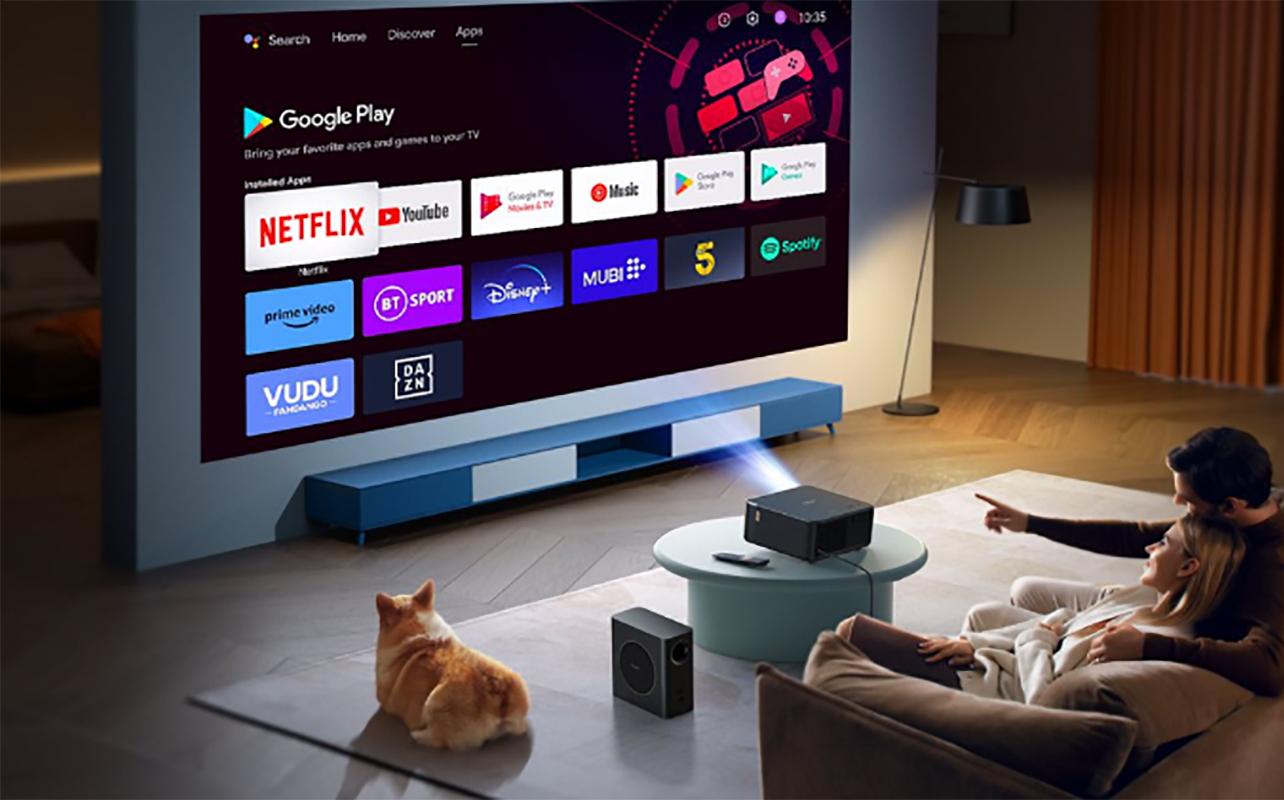
On the surface, a white wall might seem like an ideal projection surface. It’s flat, blank, and light in colour, after all. But walls simply aren’t designed to deliver the same performance as a purpose-built projector screen. Three main factors explain the difference.
Surface texture and flatness
Even freshly painted walls often have subtle imperfections: tiny bumps, roller marks, or uneven plaster. These small variations scatter light in different directions, softening the image and making it look less crisp.
Reflectivity
Projector screens are designed with a specific gain rating, which measures how well they reflect light back toward the audience. A gain of 1.0 reflects the same amount of light as a standard white surface but does so in a more controlled and efficient way. Walls, without a reflective coating, tend to absorb more light and return less to your eyes, resulting in a dimmer picture.
Colour accuracy
High-quality screens are engineered to reflect colours neutrally, preserving the intended look of the content. A wall’s paint, especially if it’s slightly off-white, cream, or matte grey, can alter colours. Whites may appear duller, skin tones may skew warmer or cooler, and scenes with subtle shading can lose detail.
Even if your wall is perfectly smooth and freshly painted, it’s still not optimized for projection. A dedicated screen’s material is purpose-built to enhance clarity, contrast, and brightness in a way that paint alone cannot match.
Projector paint vs screen: can paint compete?
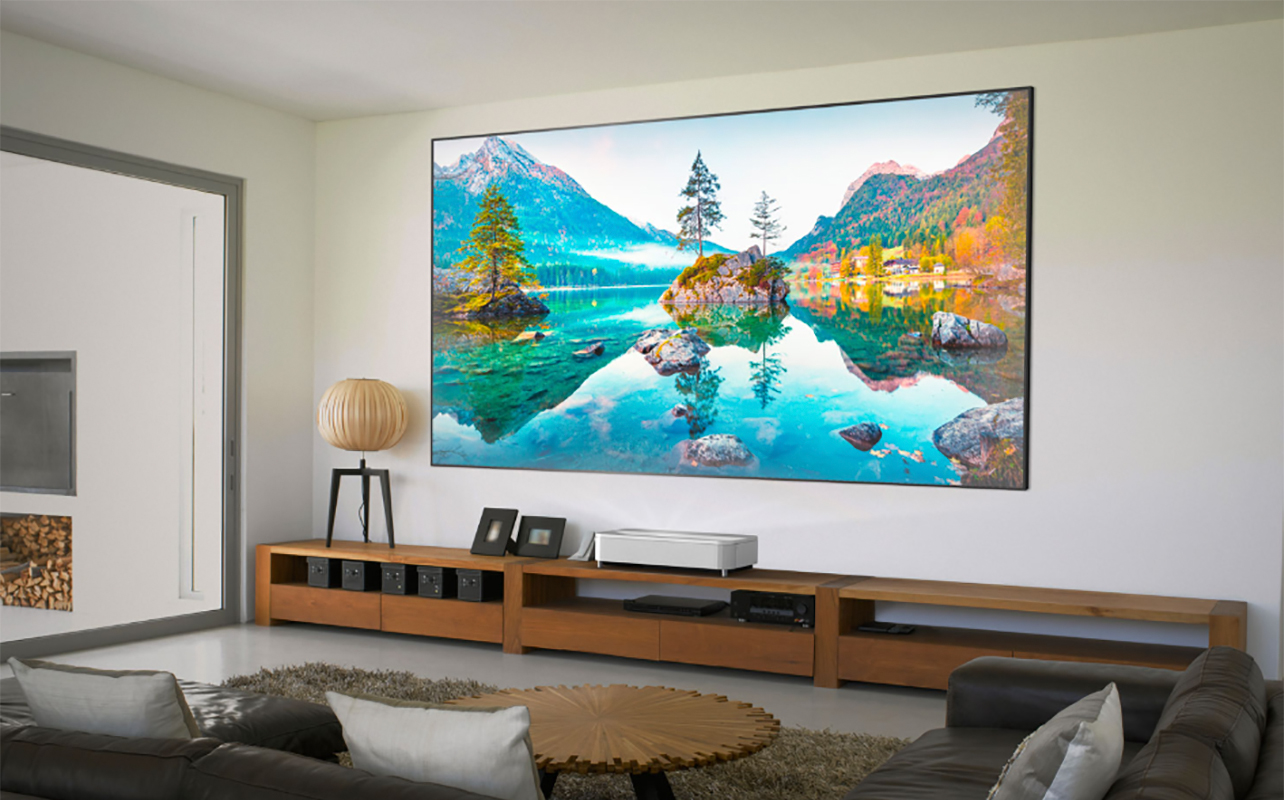
You can apply projector paint, a special type of coating, to a wall to improve projection quality. Unlike regular interior paint, it’s formulated to reflect light more evenly and maintain colour accuracy.
How projector paint works
Instead of scattering light in all directions, projector paint is designed to direct light back toward the viewer, similar to how a projection screen does. It often comes in white or grey tones, depending on your lighting conditions.
Pros
- Budget-friendly: Projector paint is often more cost-effective than investing in a large fixed-frame or motorized screen, especially for big viewing areas. You’re essentially upgrading an existing wall rather than buying a whole new piece of equipment.
- Space-saving: Ideal for small rooms or multi-purpose spaces, since there’s no bulky screen to mount, roll up, or store. The “screen” becomes part of your wall, so it blends seamlessly with the room’s design.
- Custom size: You can paint your projection surface to any dimensions you want, whether that’s a standard 100-inch rectangle or an oversized cinematic wall. This flexibility means you’re not limited to the standard sizes screens are sold in.
Cons
- Prep required: You’ll need to do some work to get a smooth, high-quality surface. This involves sanding and smoothing the wall to remove imperfections, applying primer, then adding multiple coats of projector paint. Skipping steps can lead to uneven images.
- Not as good as a real screen: While projector paint produces better results than standard wall paint, it still can’t match the reflective coating, contrast control, and light uniformity of a high-quality projector screen. You can expect a noticeable improvement over bare walls, but not the same performance as premium screen materials.
Think of paint as a middle ground. It’s better than a bare wall, but not quite the same as a dedicated screen.
Black projector screen vs white: which is better?
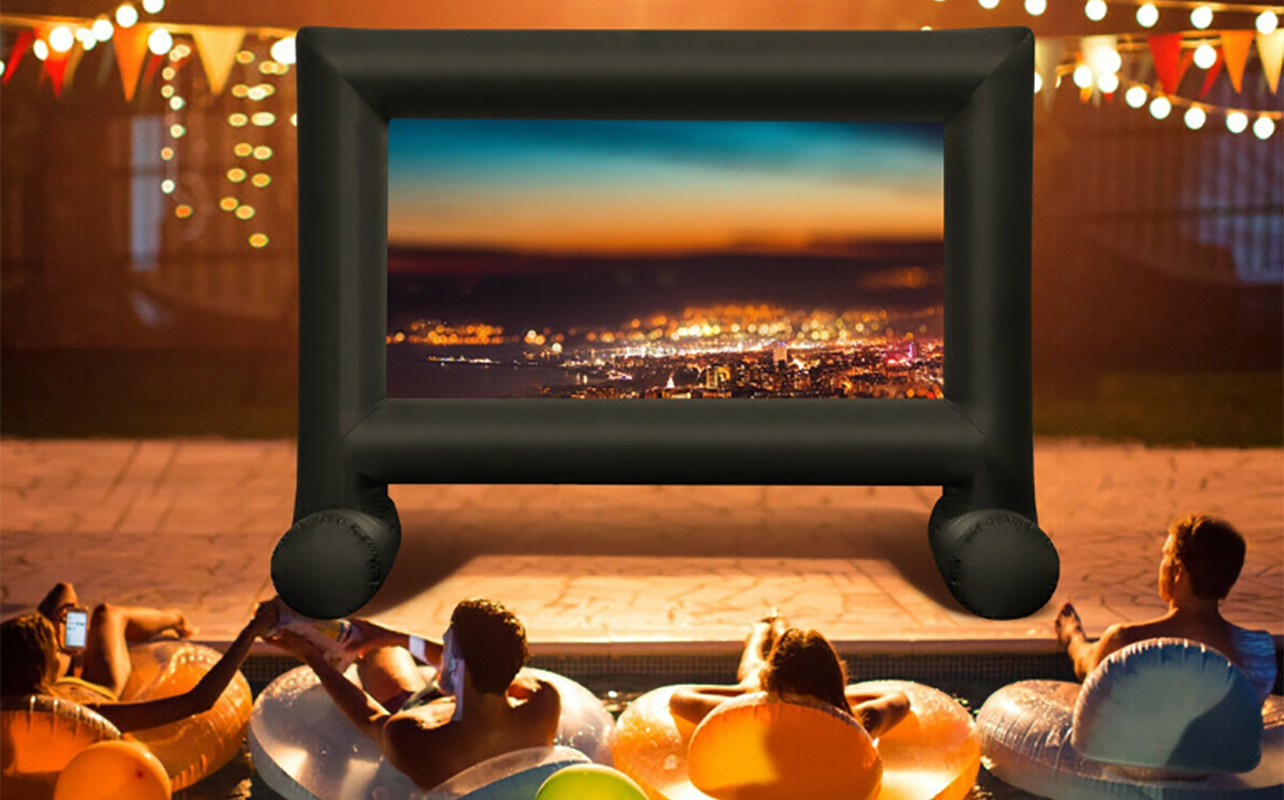
Especially in rooms when you can’t control lighting perfectly, black screens are becoming more popular.
Black projector screens
Black projector screens are designed to handle rooms with more ambient light, such as spaces with uncovered windows or lamps. They absorb stray light, helping maintain contrast so dark scenes don’t look washed out. They’re especially effective when paired with ultra short throw projectors that sit close to the wall.
White projector screens
White screens reflect more light and are best suited to darker, theatre-style environments where you have full control over lighting. In these conditions, they deliver maximum brightness and maintain natural colours without the need to fight against ambient light.
Choosing between them comes down to your viewing environment: black screens for brighter rooms, white screens for controlled, dark spaces.
How far from the screen should your projector be?
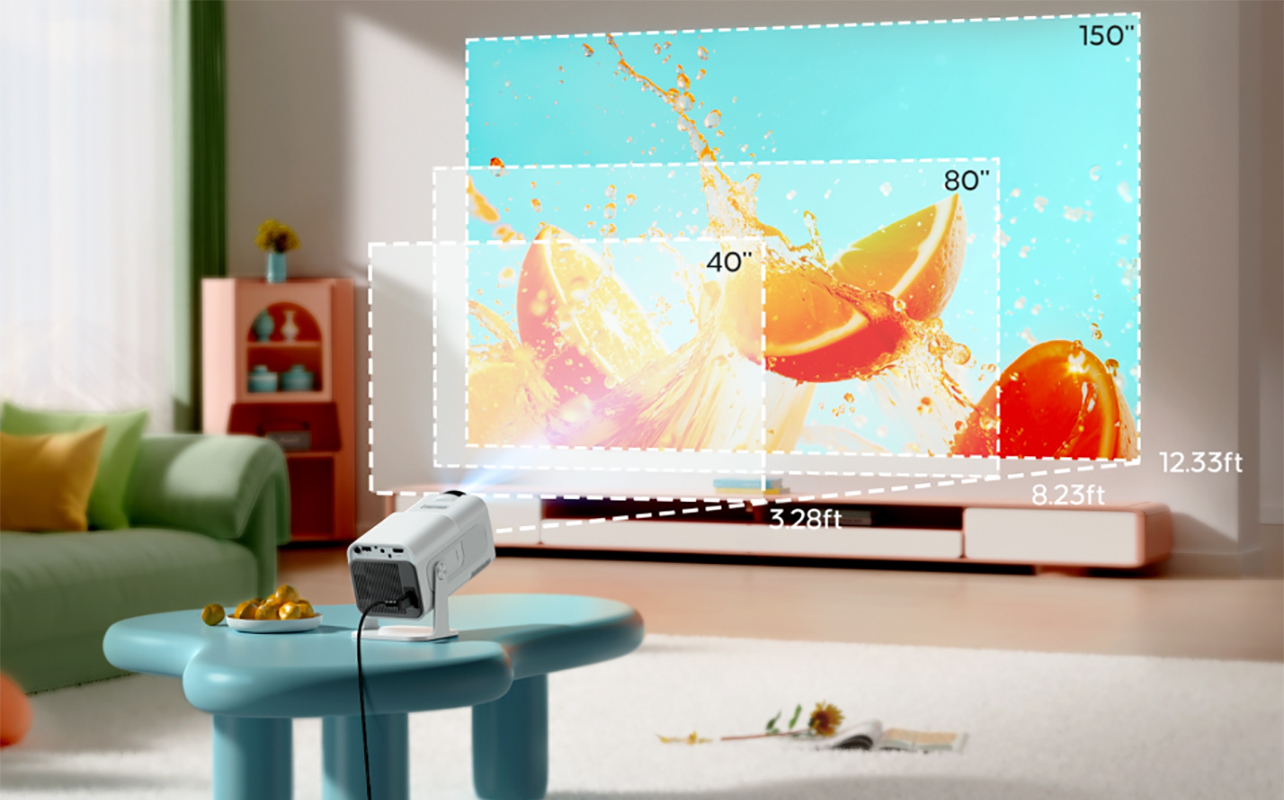
This isn’t just a quality issue; it’s a comfort issue too. The distance between your projector and the screen (called the throw distance) affects how large the image appears and how sharp it is.
Every projector has its own throw ratio, which you can find in the manual. For example, if your projector has a throw ratio of 1.5 and your screen is 100 inches wide, you’ll need to place it about 150 inches (12.5 feet) away. Ultra short throw models can sit just a few inches from the wall, while standard projectors might need several metres.
Getting this distance right ensures your picture is sharp, fills the screen properly, and isn’t distorted. Read more about projector screen dimensions and how to interpret them to get a better understanding.
Should you use a projector screen or a wall?
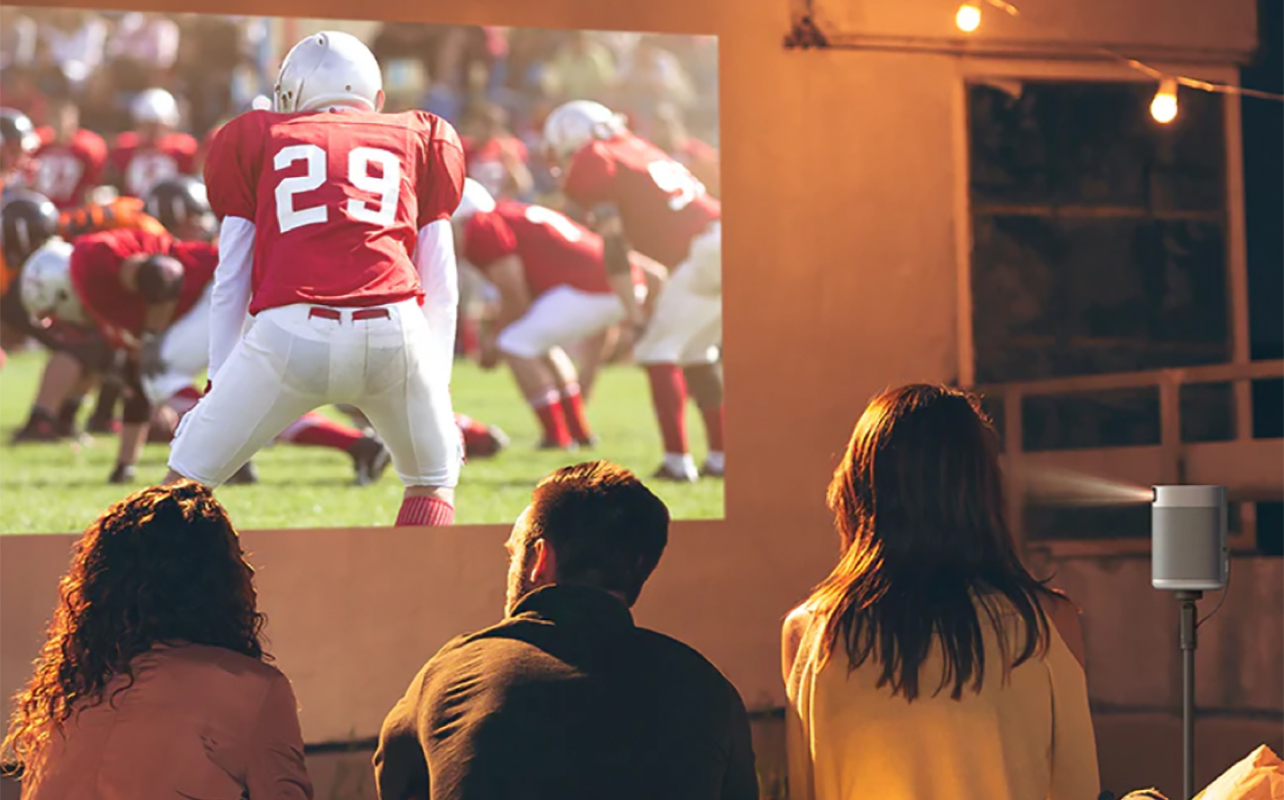
Projecting onto a wall is perfectly fine for casual viewing, temporary setups, or situations where you can’t mount a screen. You might find it sufficient if you’re using the projector for work purposes, mirroring your laptop screen, for example. It’s a low-effort way to get started, and for occasional use, it may meet your needs. However, if you care about image quality, brightness, and colour accuracy, or if you’ve invested in a good projector, a screen is the clear winner. It’s the best way to experience your projector’s full potential, whether you choose a fixed-frame, pull-down, or portable model. Even projector paint, while an improvement over bare walls, won’t quite match what a screen can deliver.
Transform your home viewing experience into a true theatre-like experience with the right projection surface. If you’re ready to elevate your setup, explore projector screens at Best Buy to find one that makes every movie night unforgettable.

This article was drafted using AI technology and then reviewed, fact-checked, and revised by a member of our editorial team.



